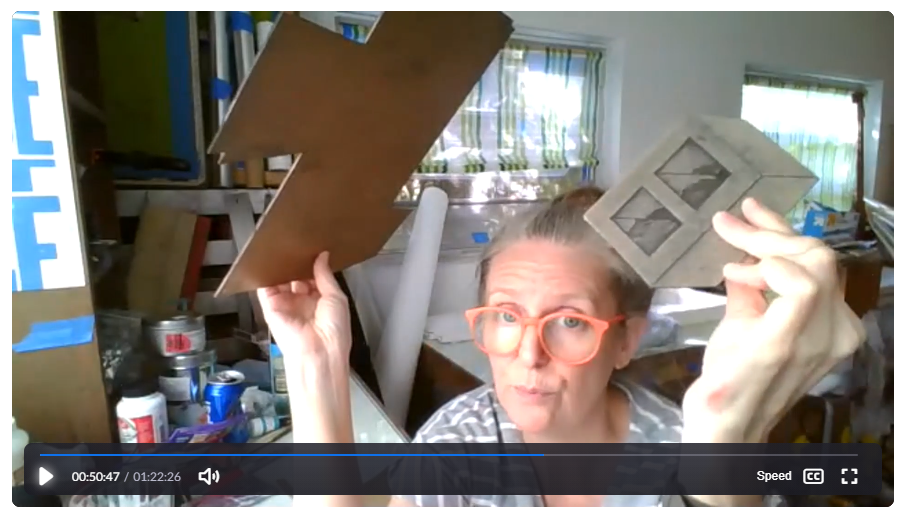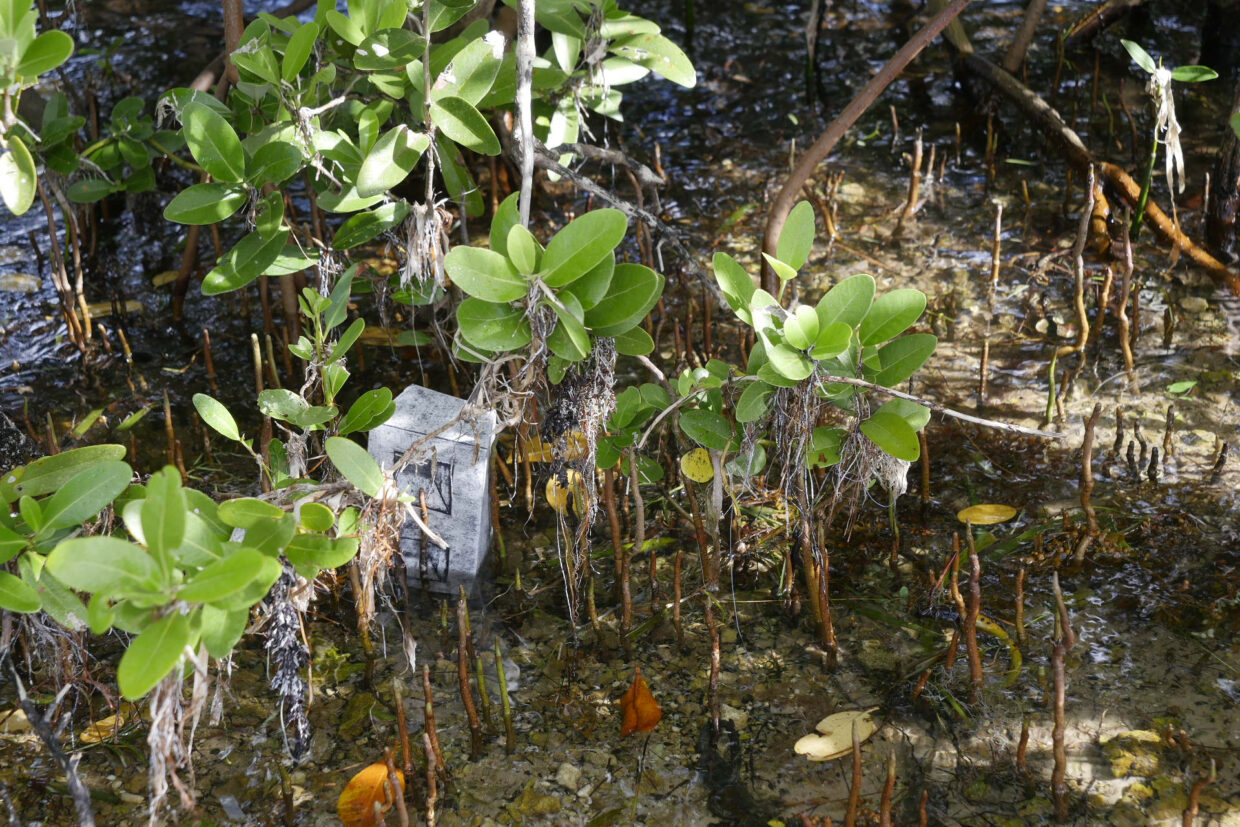My work is part of the 2020 AIM Biennial, organized and curated by Marie Vickles, William Cordova, Gean Moreno, and Mikhaile M. Solomon. Running from December 1, 2020, through December 31, 2020, the AIM Biennial is:
. . . a project which features new site-specific installations throughout South Florida, created by local cultural practitioners–including visual artists, dancers, activists and performers–who represent our region’s diversity. With an emphasis on ritual, monuments and shrines, these installations have been produced in response to historically layered landscapes, landmark locations, urban vernacular architecture, the Everglades and the various communities of our region.
www.aimbiennial.org
The proposal I submitted when invited to participate was for a project called Future Construct:
Future Construct will be a temporal, short-duration, site-specific installation of a paper sculptures at different locations within Matheson Hammock. The installation will be documented, and the work will persist through digital images, and perhaps also through objects.
The paper sculpture will be a small-scale paper reproduction of a concrete masonry block, created by hand by the artist from collagraph plates. The components used to assemble the sculpture will be intaglio-inked collagraph prints on an inexpensive paper. A small edition of these sculptures will be made specifically for the purpose of installing in the landscape of Matheson Hammock. They will be placed in water, in muck, in sand, along the shoreline, and nestled among the mangroves. The installation of these sculptures will contribute to their deterioration, as the paper will be susceptible to damage and destruction by water, dirt, or other environmental factors.
My proposal also included sections about the conceptual underpinnings of the work, poetics, environment, execution and the connection to some of my previous works. The full proposal is linked above.
Images documenting the temporary installation of the print-sculptures at Matheson Hammock are below; the titles of the images are taken directly from phrases found in my 2016 short story “It Was to Be a Glittering City“. The sculptures were initially created as an edition of three, and were positioned throughout the park until the exposure to saltwater dissolved the glue holding them together and warped the paper they were printed on.
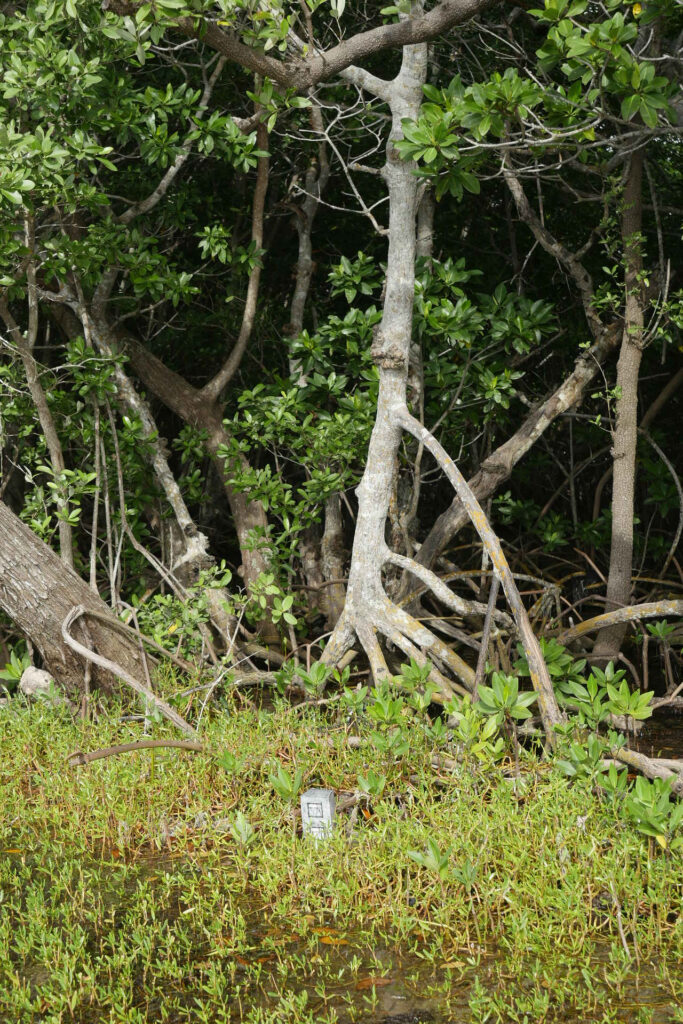
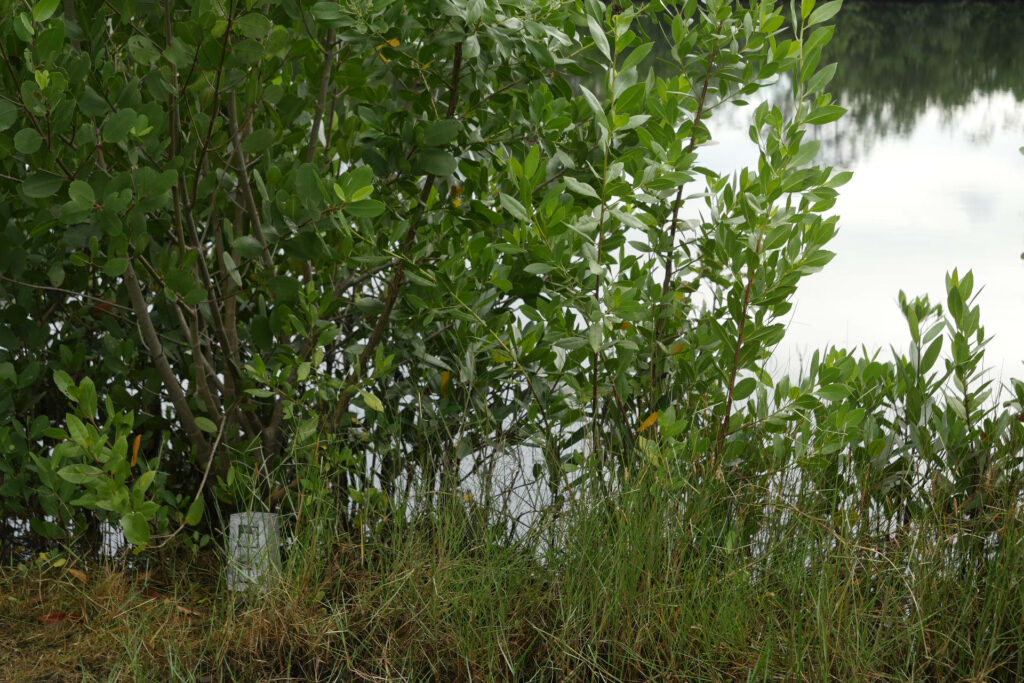
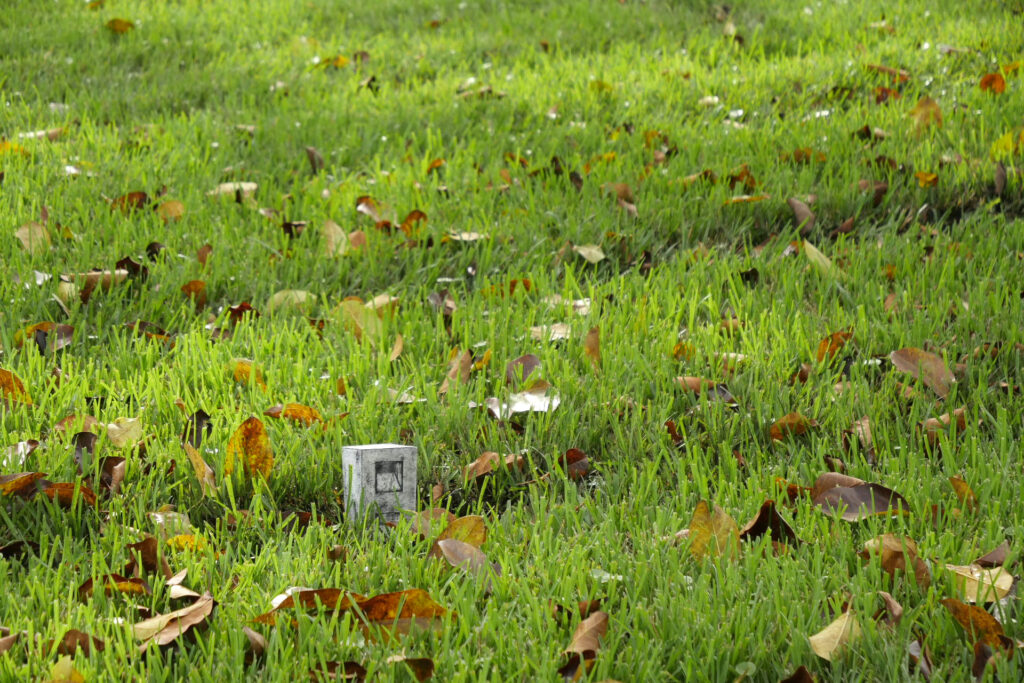
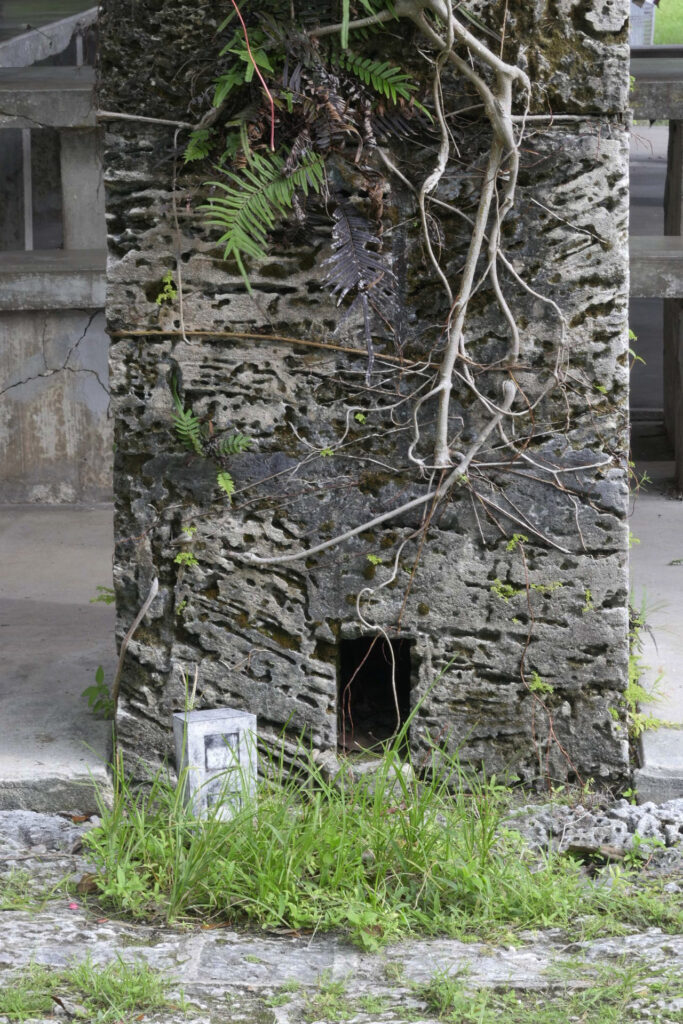
The concrete masonry block is one of the foundational units of construction for many of the buildings located in South Florida, and has several complex associations with both the place and the people. In a series of works on paper (primarily prints) from 2016, I began to use both the concrete masonry block and the ceramic barrel tile as icons that were semantically keyed to the idea of the body—the way the body carries context, and the way it conveys representation of identity within a locale.
Hudspeth AIM Biennial Proposal
These architectural signifiers are rampant throughout this region and offer an extension of regional identity. The block and the barrel tile function like characters in a scene, but also function as icons referring to status and structure . . . .
The installation of paper replicas of concrete blocks will speak both to the dream of real-estate and development projections about this place—paper being the material most likely to historically support the genesis of plans for the future, and for ideas only existing in the conceptual phase . . .
After the paper sculptures had degraded from exposure, I positioned them in other locations within Coral Gables–they were entirely removed from Matheson Hammock the same day they were documented, or else they would have become litter (all materials used to make them are environmentally safe).
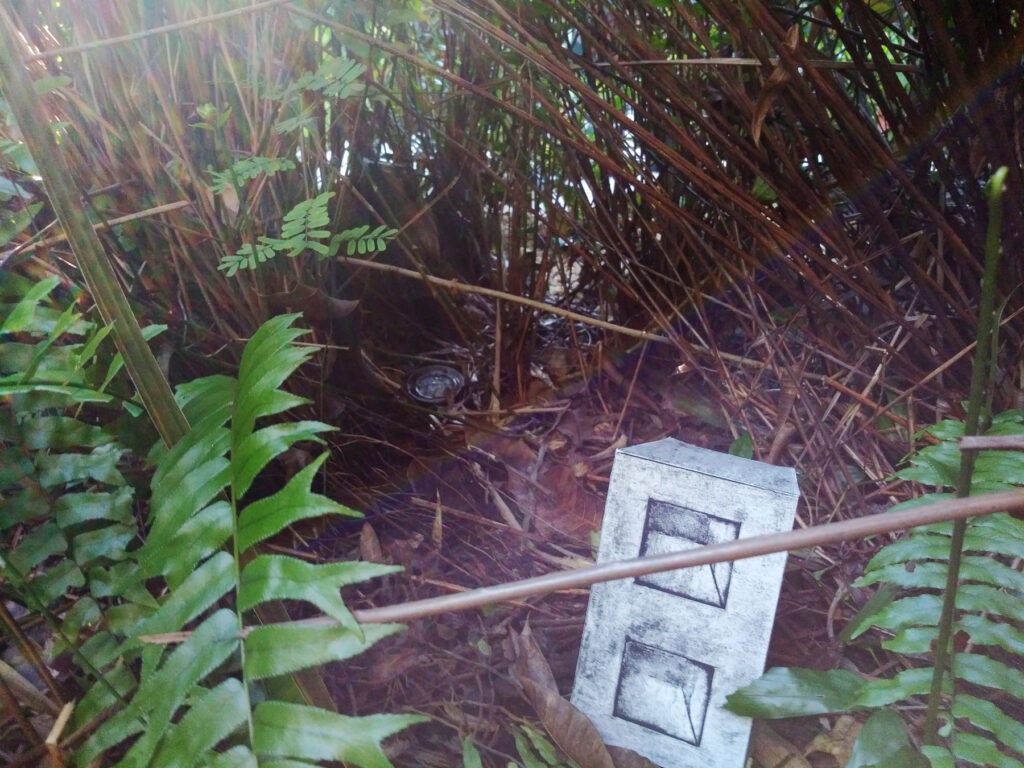
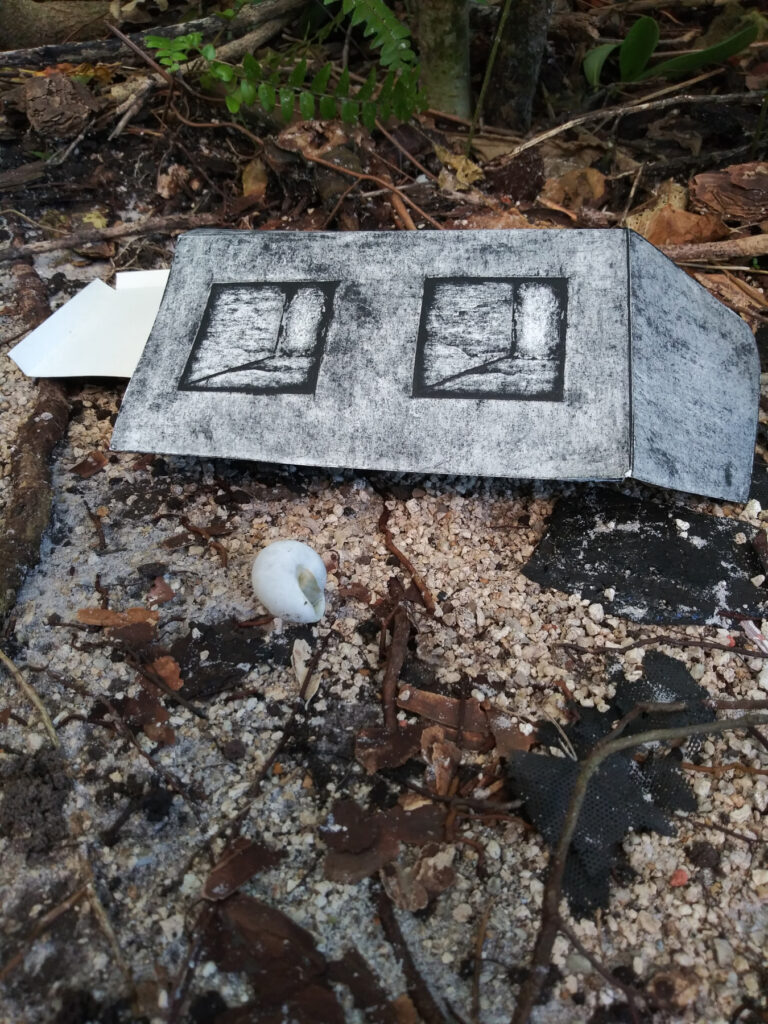
Some images documenting the production of the prints are below. The form of the paper cinder block was intentionally meant to be askew, to help introduce perspectival confusion in the documentation. The print was created as a chipboard (cardboard without ribs) collagraph plate, inked with oil-based ink and printed flat before being scored, folded and glued.
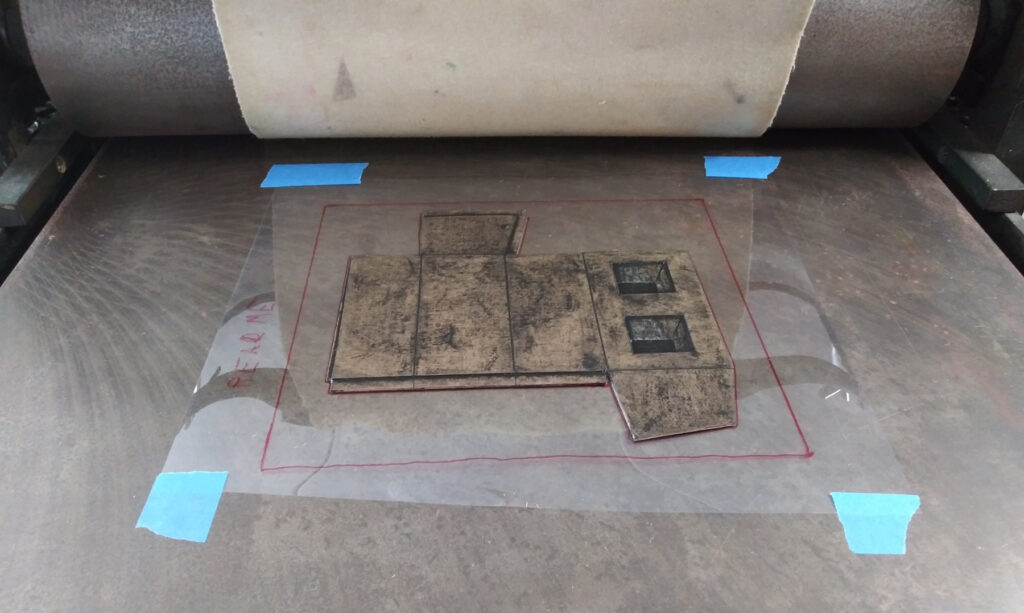
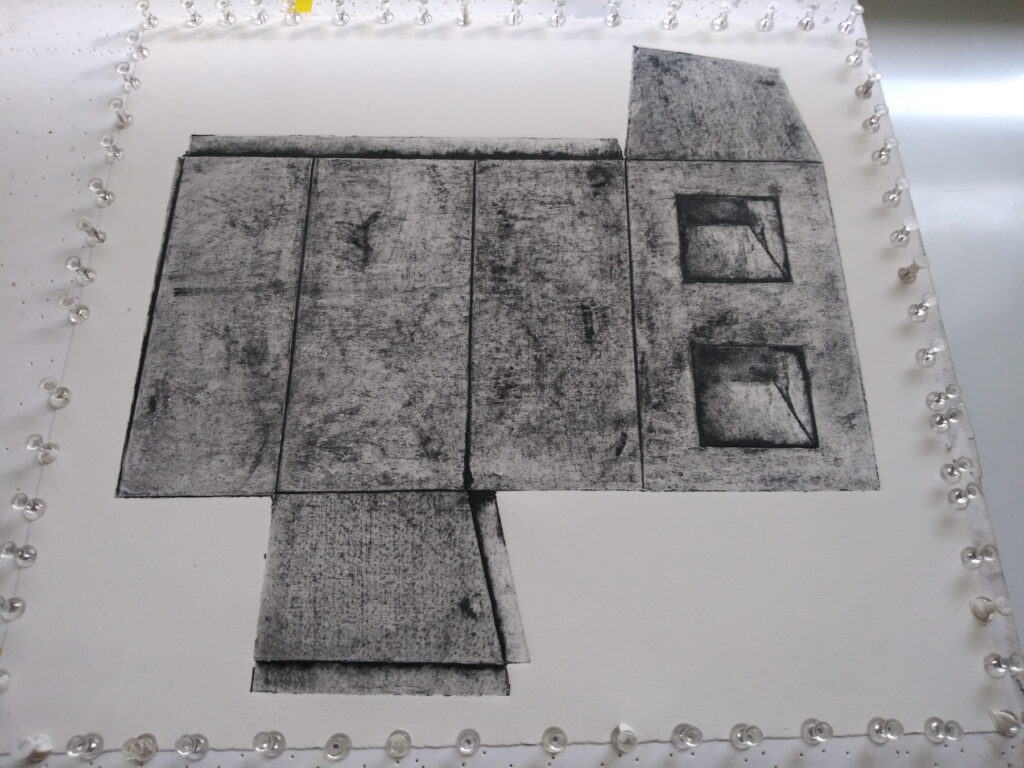
The impression was pinned so that it would dry as flat as possible, in order to better facilitate easier construction.
The image below is a screenshot from my Fall 2020 remote printmaking class at Florida Atlantic University, during which I used the plate for this work, as well as a plate from 2016, as demonstration plates while instructing the students about collagraphs.
